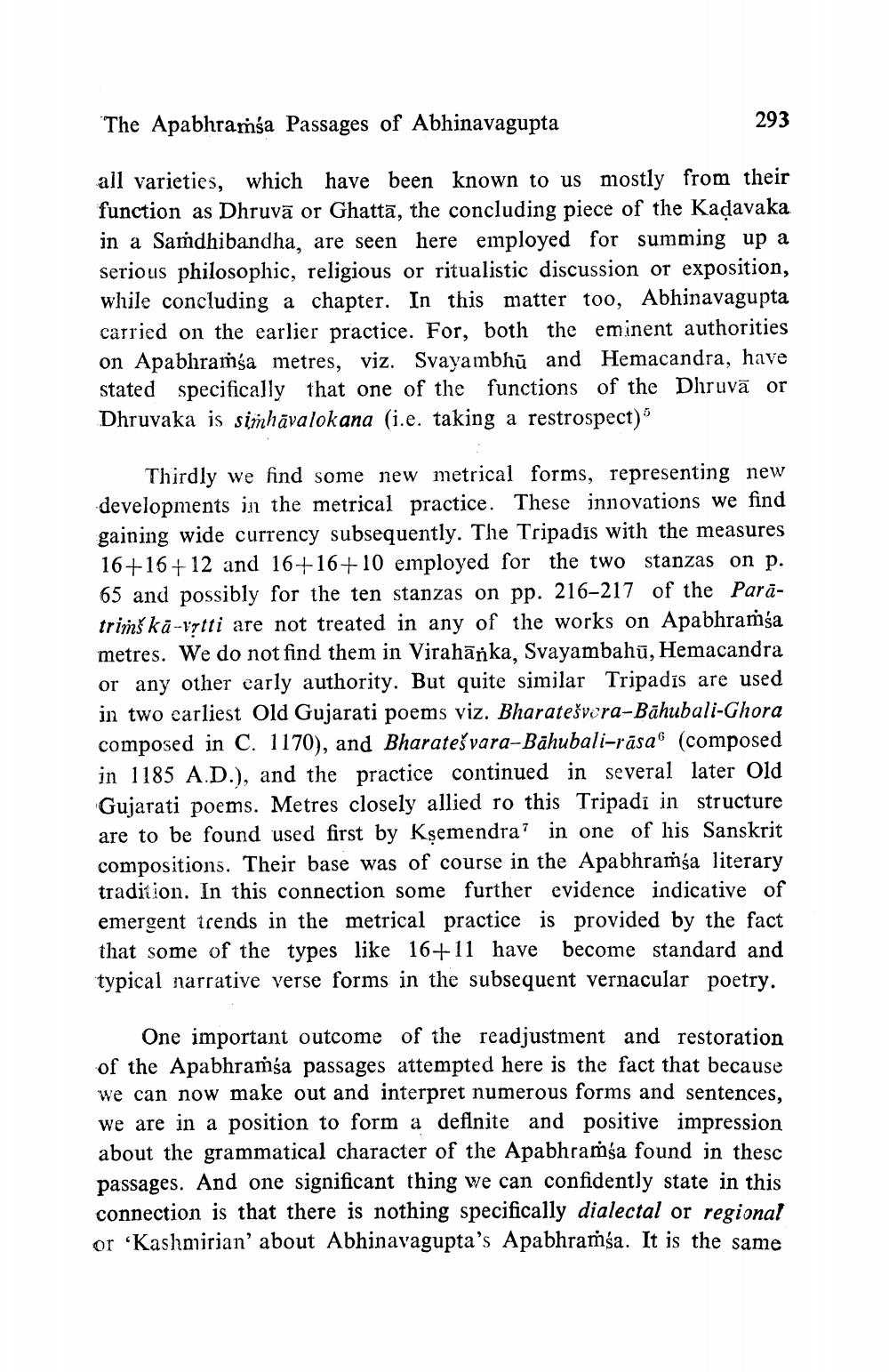________________
"The Apabhramsa Passages of Abhinavagupta
293
all varieties, which have been known to us mostly from their function as Dhruvā or Ghattā, the concluding piece of the Kadavaka in a Samdhibandha, are seen here employed for summing up a serious philosophic, religious or ritualistic discussion or exposition, while concluding a chapter. In this matter too, Abhinavagupta carried on the earlier practice. For, both the eminent authorities on Apabhramsa metres, viz. Svayambhū and Hemacandra, have stated specifically that one of the functions of the Dhruvā or Dhruvaka is simhävalokana (i.e. taking a restrospect)
Thirdly we find some new metrical forms, representing new developments in the metrical practice. These innovations we find gaining wide currency subsequently. The Tripadis with the measures 16+16+12 and 16+16+10 employed for the two stanzas on p. 65 and possibly for the ten stanzas on pp. 216–217 of the Parātrims kā-rytti are not treated in any of the works on Apabhramsa metres. We do not find them in Virahārka, Svayambahū, Hemacandra or any other carly authority. But quite similar Tripadis are used in two earliest Old Gujarati poems viz. Bharatešvora-Bāhubali-Ghora composed in C. 1170), and Bharatešvara-Bāhubali-rāsa (composed in 1185 A.D.), and the practice continued in several later Old Gujarati poems. Metres closely allied ro this Tripadi in structur are to be found used first by Kșemendra? in one of his Sanskrit compositions. Their base was of course in the Apabhraṁsa literary tradition. In this connection some further evidence indicative of emergent trends in the metrical practice is provided by the fact that some of the types like 16+11 have become standard and typical narrative verse forms in the subsequent vernacular poetry.
One important outcome of the readjustment and restoration of the Apabhramsa passages attempted here is the fact that because we can now make out and interpret numerous forms and sentences, we are in a position to form a definite and positive impression about the grammatical character of the Apabhramsa found in these passages. And one significant thing we can confidently state in this connection is that there is nothing specifically dialectal or regional or Kashmirian' about Abhinavagupta's Apabhraṁsa. It is the same




